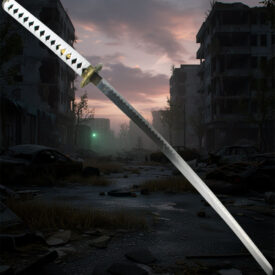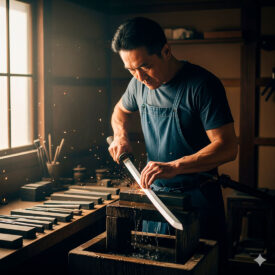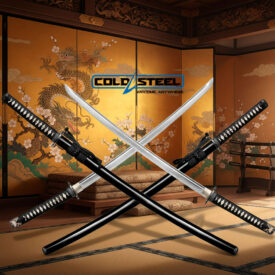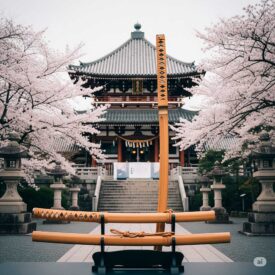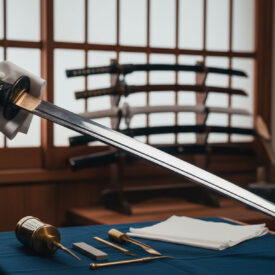Have you ever wondered how one can train with the nobility of a katana without risking physical integrity? Imagine the rustle of bamboo echoing like an ancestral whisper as you learn to measure distance, balance, and timing; that’s what safe bamboo katanas offer: a way to touch tradition without exposing your body to the blade of the past.
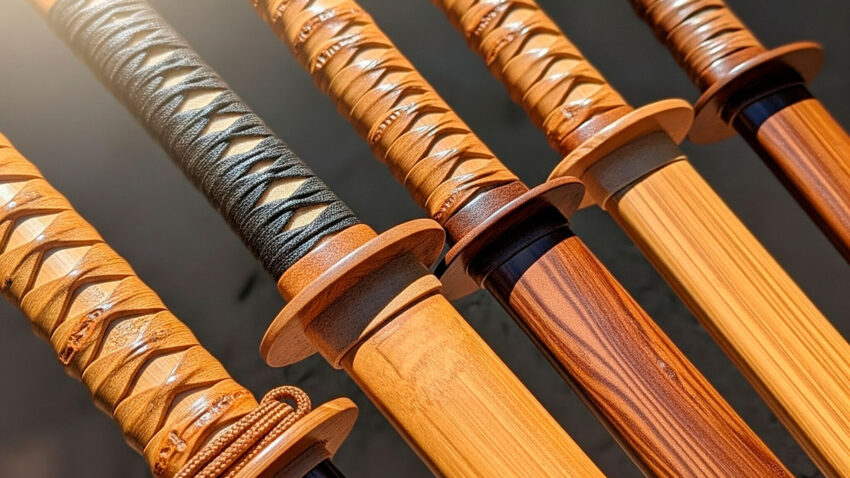
Why Bamboo Katanas Are the Logical Choice for Beginners
First contact with the sword should prioritize safety, repetition, and the authentic feel of the weapon. Bamboo katanas meet all three conditions.
Safety: Lacking a real edge and designed to absorb impacts, they drastically reduce the risk of cuts and serious injuries.
Repetition and Learning: Their lightness allows for a greater number of repetitions and improves muscle endurance without causing excessive fatigue.
Connection with Tradition: Although they are modern practice tools, they maintain the spirit and balance that characterize a real katana.
A Historical View: How the Shinai Was Born and Why It Matters
The adoption of bamboo as a training material is an act of ingenuity that combines necessity and nature. Japanese artisans recognized early on bamboo’s ability to flex and return to its shape, providing a safety that a metal blade could not offer. This observation forever changed martial arts training.
Before detailing techniques, materials, and practical recommendations, it’s important to place this evolution in a chronology that shows how necessity transformed the instrument.
Shinai and the Evolution of the Bamboo Katana
| Era | Event |
|---|---|
| Ancient Times (before the 18th century) | |
| Bamboo Properties | Ancient sword makers recognized the flexibility, durability, and lightness of bamboo as ideal qualities for safer practice weapons. |
| Training with Real Swords and Bokken | Before the shinai, training was done with steel swords or bokken (solid wood), which involved a high risk of serious injury. |
| Fukuro-shinai (predecessor) | The fukuro-shinai (“bag shinai”) existed: a split bamboo rod covered by a leather sheath; it is still used in some koryū kenjutsu. |
| 18th Century: Invention and Protection (1710–1740) | |
| 1710 — First Bamboo Katana for Practice | A bamboo saber was specifically devised for practice, with the aim of reducing injuries. The first models were rustic. |
| 1740 — Protective Equipment | Great masters introduced head protectors (men), chest protectors (do), and thick leather gloves (kote), enabling safer training and giving rise to the shinai as recognized in the Kendo tradition. |
| Refinement (18th–19th centuries) | |
| Design Evolution | After 1710, bamboo sabers were refined to the modern design: generally four bamboo staves joined with leather pieces that allow for flexion and impact absorption. |
| Meiji Era and Late 19th Century (post-1868) | |
| Abolition of the Samurai Class and Social Change | With the prohibition of carrying swords and the formal disappearance of the samurai class, gendai budo emerged, focusing on ethical education and training through modern martial arts. |
| Gekiken and Competitions | Gekiken (striking fencing with protective equipment and bamboo swords) developed in some kenjutsu schools and began to lead to competitions between schools. |
| 1895 | The Dai Nippon Butoku Kai organization is established to promote the virtues of Bushidō through modern martial arts. |
| Early 20th Century (1912–1933) and Officialization | |
| 1912–1933 | A special committee formulated the Nippon Kendo Kata, a series of common techniques practiced with bokutō, to correct vices originating from the continuous use of the shinai when handling a real katana. |
| 1920 | The Dai Nippon Butoku Kai changed the name of sport fencing from gekiken to Kendo, consolidating the discipline as a regulated martial art using shinai and protectors. |
| 1970s | |
| Seitei Kata | With contributions from iaidō masters, the Seitei Kata, a compendium of drawing katana kata, was added to the Kendo curriculum. |
| Modern Era | |
| Manufacturing and Technology | Shinai production integrates traditional craftsmanship with technological advancements: selection and treatment of bamboo, resins, forming, and in some cases CAD and 3D printing for prototypes and components. |
| Ecological Aspect | Bamboo katanas represent a sustainable option: bamboo is a fast-growing renewable resource, and manufacturers adopt environmentally friendly methods. |
- Shinai
-
- Use: Kendo and contact training.
- Material: Bamboo staves (madake).
- Safety: High due to its flexibility and shock absorption.
- Bokken
-
- Use: Kata and practice without intense contact.
- Material: Traditional solid wood; some bamboo variants for display.
- Safety: Lower than shinai if used for strong contact.
Materials, Construction, and Why They Matter
The difference between a bamboo katana that inspires confidence and one that breaks in the first session lies in the choice of raw material and assembly technique.
Types of Bamboo and Treatments
Madake bamboo is preferred for its combination of hardness and flexibility. Some manufacturers apply heat treatments or resins to improve durability and moisture resistance.
Parts of a Shinai and Their Function
- Saya (scabbard) or cover: protects the structure and facilitates transport.
- Tsuka (handle): wrapped in cord for a secure grip.
- Tsuba (guard): prevents the hand from slipping towards the blade and protects from side impacts.
- Tamashigane (knot or cap): secures the staves at the end and maintains structural integrity.
Each element contributes to safer and more realistic practice.
Practical Comparison: Shinai, Bokken, and Cosplay Replicas
To choose correctly, it’s helpful to compare key attributes.
| Type | Approximate weight | Total length | Recommended Use | Safety for Beginners |
|---|---|---|---|---|
| Shinai (bamboo) | ≈ 500–600 g | ~960–1030 mm | Contact training, Kendo | Very high |
| Bokken (wood) | ≈ 700–1000 g | ~1000–1100 mm | Kata, non-contact practice | Moderate |
| Cosplay Replicas (bamboo/foam) | ≈ 300–800 g | Variable | Cosplay, display, safe non-contact practice | High if unsharpened and well-covered |
- Shinai
-
- Safety: Ideal for contact due to its flexibility.
- Use: Kendo and sparring sessions.
- Bokken
-
- Safety: Good for kata; caution in combat.
- Use: Forms and technique.
Concrete Benefits for Beginners
- Progressive Learning: They allow you to focus on posture, cutting, and distance without fear of the blade.
- More Repetitions: Lightness prolongs practice without excessive fatigue.
- Coordination Development: The feedback from bamboo on impact teaches precision and timing.
- Economical and Practical: Lower cost and maintenance compared to metal weapons.
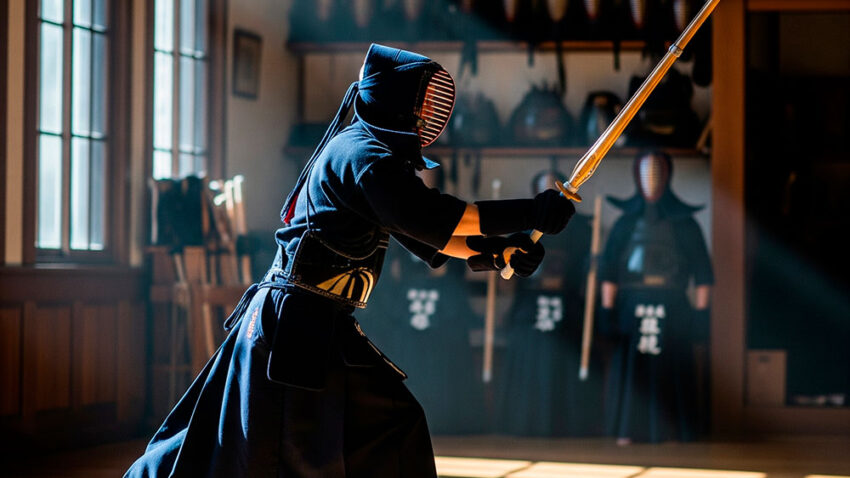
Maintenance and Essential Care
A well-maintained shinai lasts a long time and performs better. Follow these simple guidelines.
- Store in a dry, ventilated place to prevent moisture.
- Regularly check the staves and replace damaged ones.
- Tighten or replace cords and tsuka if they show wear.
- Clean with a dry cloth and apply oil or resin treatments only if recommended by the manufacturer.
Common Mistakes When Choosing and Using a Bamboo Katana
- Buying for aesthetics: An eye-catching design does not guarantee safety or structural quality.
- Ignoring proper length: A weapon that is too long or too short affects technique and increases the risk of injury.
- Using it without adequate protection: The shinai is safe, but protective equipment further reduces the risk.
Avoiding these mistakes accelerates progress and protects the integrity of all practitioners.
Tips for the First Training Session
Arrive in comfortable clothes, communicate your level to the instructor, and follow these rules:
- Warm up beforehand to prevent muscle injuries.
- Start with basic techniques and slow movements.
- Practice controlled strikes and gradually increase intensity.
- Exchange feedback with your practice partner to refine details.
Bokken Models for Training
Bamboo Katana Models (decorative for Anime and CosPlay)
Applications Outside the Dojo: Cosplay, Education, and Public Safety
Bamboo katanas are not limited to the tatami. In cosplay, they offer a convincing appearance without risks; in teaching, they allow for explaining history and technique; in events and filming, they replace real weapons safely.
In every context, the rule is the same: prioritize unsharpened pieces, good coatings, and responsible handling.
How to Assess the Safety of a Bamboo Katana Step by Step
- Visual inspection: look for cracks, deformities, or loose joints.
- Flex test: a correct shinai flexes and returns without splintering.
- Handle check: the tsuka must offer a firm grip.
- End cap review: the final knot and tsuba must be secure.
Questions You Should Ask When Buying a Bamboo Katana
- What type of bamboo is used and how is it treated?
- What is the recommended purpose (Kendo, kata, cosplay)?
- How is it made and what safety guarantees do they offer?
Technical Comparison and Recommendations by Level
Depending on your background in martial arts, it is advisable to choose a different option.
- Absolute Beginners: standard shinai, size and weight according to your height. Focus on technique and repetition.
- Intermediates: higher quality shinai or bokken for kata; combine both for versatility.
- Advanced: alternate bokken and shinai to maintain precision and strength; use bokken for drawing and control work.
| Level | Recommendation | Why |
|---|---|---|
| Beginner | Lightweight Shinai | Facilitates repetition and reduces fatigue. |
| Intermediate | Quality Shinai + Bokken | Allows for contact work and forms. |
| Advanced | Bokken and Bokutō training | Improves precision and real handling. |
Regulatory Safety and Responsible Behavior
There is no substitute for discipline: respecting dojo rules, using protective equipment, and maintaining clear communication with peers are measures as important as the quality of the shinai.
Adopting responsible conduct turns any practice into an enriching and safe experience.
Environmental Advantage: Bamboo as a Sustainable Choice
Bamboo is not only useful; it is an ethical statement. It grows quickly, regenerates without constant replanting, and its environmental footprint is usually smaller than that of metal materials. By choosing bamboo, you support a more renewable production chain.
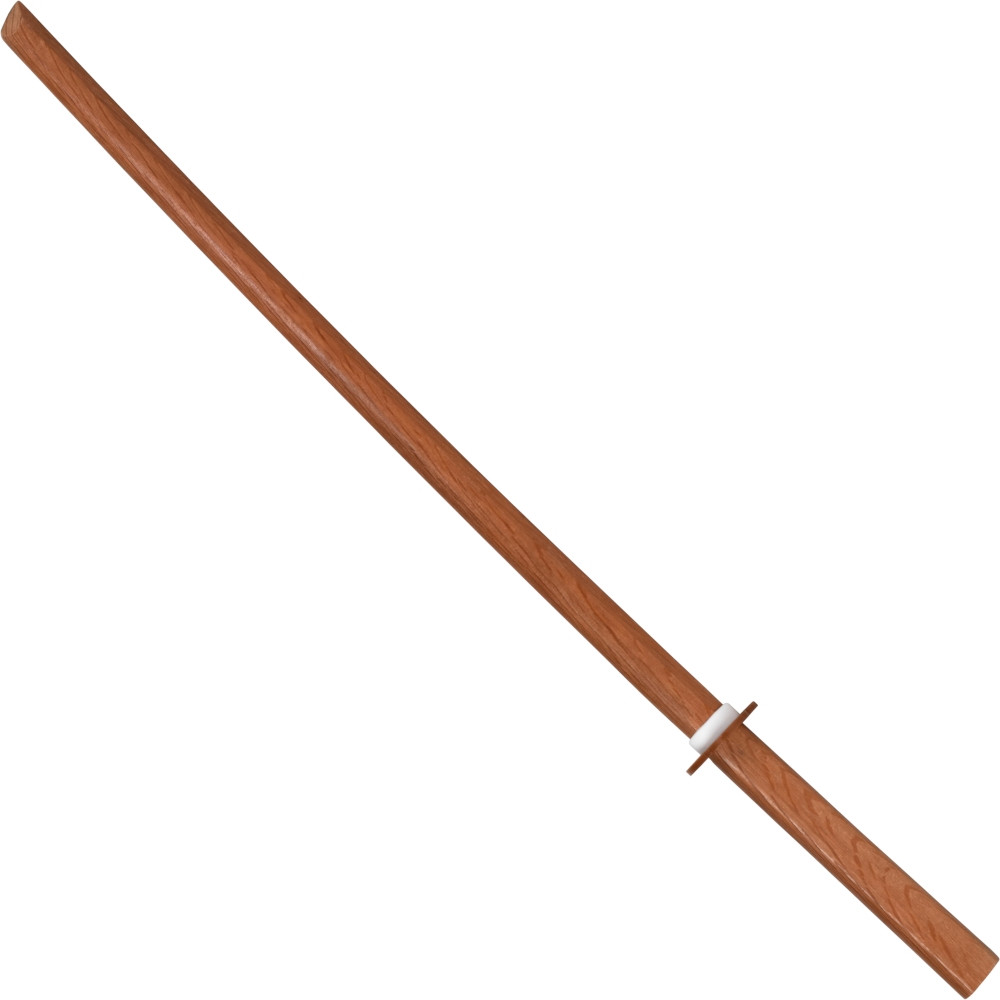
Learning Stories: Anecdotes that Teach
In many schools, the shinai acts as a silent teacher: it corrects posture, demands patience, and rewards consistency. A novice who repeated cuts for months changed their way of moving and, with it, their self-confidence. That magic happens when the tool is safe and appropriate.
Key Takeaways for Mastering the Bamboo Katana
- Choose the type according to your use: shinai for contact, bokken for kata, replicas for cosplay.
- Ensure the quality of the bamboo and the assembly.
- Keep equipment in good condition and periodically check parts.
- Follow dojo rules and protect yourself with proper equipment.
- Value the sustainability of the material as another criterion in your choice.
By incorporating these practices, you will transform curiosity into skill and safety into confidence. The bamboo katana introduces you to the path of the sword in a respectful and effective way: you learn the art without sacrificing your physical integrity.
VIEW MORE BOKKEN | VIEW SHINAI FOR KENDO | VIEW KATANAS FOR COSPLAY

